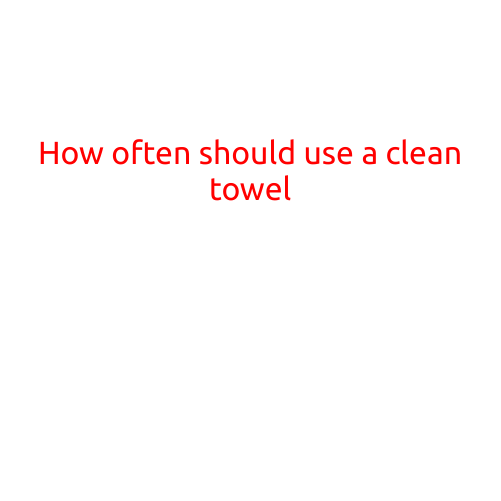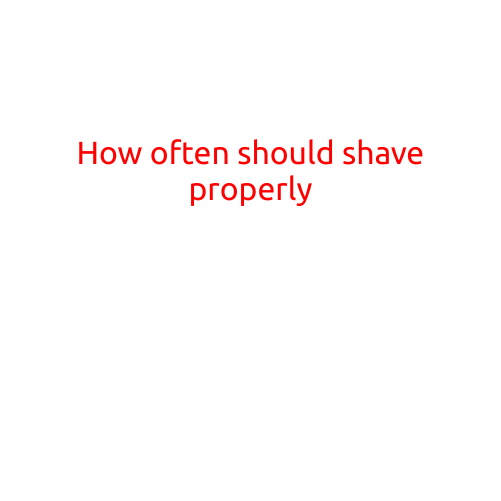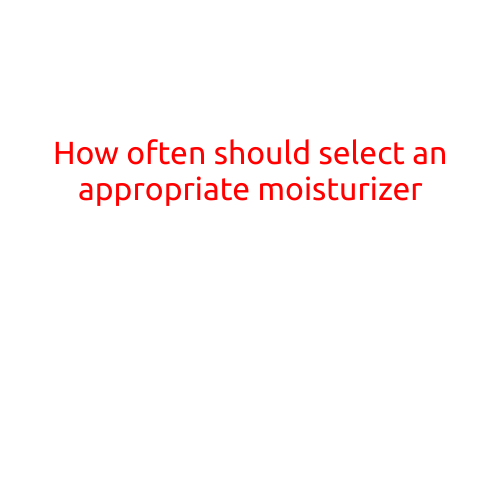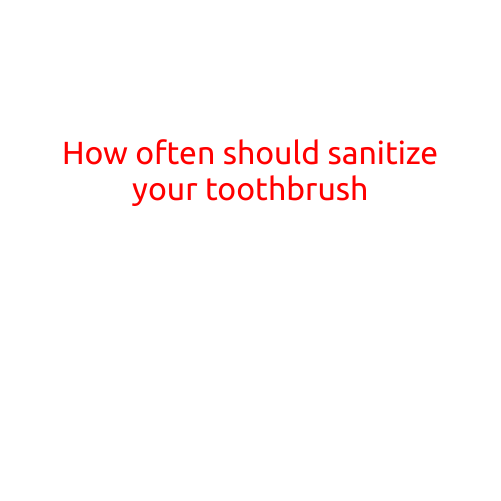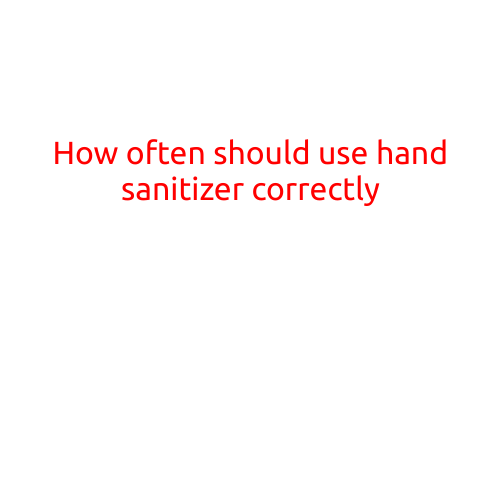
How Often Should You Use Hand Sanitizer Correctly?
Hand sanitizer has become a staple in our daily lives, especially during the COVID-19 pandemic. With the importance of proper hand hygiene, it’s crucial to know how often to use hand sanitizer correctly to keep your hands clean and germ-free. In this article, we’ll break down the correct usage of hand sanitizer and provide guidance on when and how often to use it.
Why Hand Sanitizer is Important
Hand sanitizer is often used as a supplement to hand washing with soap and water, especially when soap and water are not available. Hand sanitizer kills germs and bacteria on the skin, helping to prevent the spread of illnesses. According to the World Health Organization (WHO), hand sanitizer can reduce the transmission of respiratory infections by up to 50%.
How to Use Hand Sanitizer Correctly
To use hand sanitizer correctly, follow these steps:
- Choose the right product: Opt for a hand sanitizer that contains at least 60% ethanol (alcohol) or 70% isopropanol. These concentrations are effective against most germs and bacteria.
- Apply the correct amount: Apply a small amount of hand sanitizer, about the size of a quarter, to the palm of your hand.
- Rub it in: Rub the hand sanitizer all over your hands, including the backs of your hands, wrists, between your fingers, and under your nails.
- Rub for at least 15 seconds: Continue rubbing the hand sanitizer for at least 15 seconds to allow it to penetrate and kill germs.
- Let it air dry: Allow the hand sanitizer to air dry completely. Do not rinse your hands with water after using hand sanitizer.
When to Use Hand Sanitizer
Use hand sanitizer in the following situations:
- When soap and water are not available: When you’re unable to wash your hands with soap and water, hand sanitizer is a good alternative.
- Before and after handling food: Use hand sanitizer before and after handling food, especially if you’ll be preparing or consuming food outdoors or in areas with poor hygiene.
- After blowing your nose, coughing or sneezing: Use hand sanitizer after blowing your nose, coughing, or sneezing to prevent the spread of germs.
- After touching animals or their waste: If you’ve come into contact with animals or their waste, use hand sanitizer to prevent the spread of zoonotic diseases.
- Before and after taking care of someone who is sick: Use hand sanitizer before and after taking care of someone who is sick to prevent the spread of illness.
How Often to Use Hand Sanitizer
How often you should use hand sanitizer depends on your individual circumstances. Here are some general guidelines:
- Use hand sanitizer frequently: Use hand sanitizer frequently throughout the day, especially in areas where germs are prevalent, such as schools, offices, and public transportation.
- Use hand sanitizer after contact with high-touch surfaces: Use hand sanitizer after touching high-touch surfaces, such as door handles, elevator buttons, and countertops.
- Use hand sanitizer after being in crowded areas: Use hand sanitizer after being in crowded areas, such as shopping malls, public transportation, and sporting events.
Conclusion
Hand sanitizer is a crucial tool in our fight against germs and bacteria. By using hand sanitizer correctly and frequently, you can help prevent the spread of illnesses and keep your hands clean and germ-free. Remember to choose a hand sanitizer with the right concentration, apply the correct amount, rub it in for at least 15 seconds, and let it air dry. With a little practice and awareness, you can make hand sanitizer a part of your daily routine and help keep yourself and others healthy.
